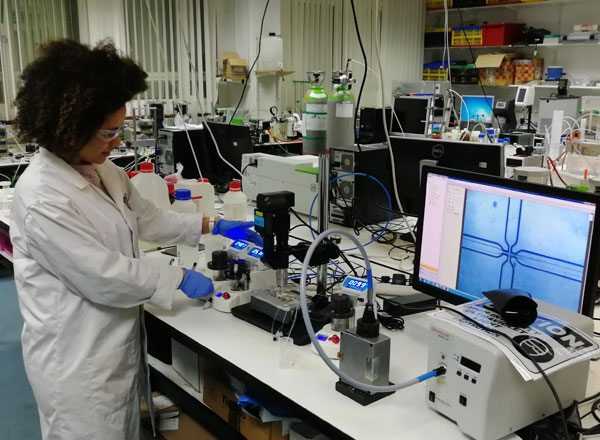One of the UK’s hallowed university sites benefited from Sika’s waterproof liquid-applied seal that helps preserve the roofing detail. The roof refurbishment at Central Building – part of Cambridge University’s Fitzwilliam College campus – was one of the first projects to apply a pioneering approach. The approach included combining Sikalastic®-621, a highly-durable and elastic liquid polyurethane system, designed for areas with complex detailing, with Sika Sarnafil’s single-ply waterproof membrane. Working closely with architect Cullinan Studio, contractors Gunite (Eastern) and Roofing Contractors Cambridge (RCC), and the college, Sika’s challenge was to create an appropriate waterproofing solution for the roof’s intricate design. Constructed in 1963 by renowned architect Denys Lasdun, the original Central Building features protruding ‘scalloped’ detailing, hence the contractor’s potentially challenging requirement: waterproof the flat roof – which itself had plenty of challenging details – and the scalloped areas, whilst maintaining the look and integrity of the roof and the building as a whole. Concrete repairs were carried out to the underside of the protruding scallops. Initially, this involved applying Sika® MonoTop®-610, a high performance, polymer-modified primer, in lieu of high-build concrete repair mortar: Sika® MonoTop®-615. The steel reinforcement was protected with Sika® FerroGard®-903+. This penetrates the concrete and forms a protective monomolecular layer on the surface of the reinforcing steel, to prevent its corrosion. The concrete was finished with Sikagard®-550W, a high-performance anti-carbonation coating, with crack-bridging capabilities, that protects the concrete, whilst meeting the aesthetic requirements of the structure. “Due to the unusual shape of the scallops, it wasn’t aesthetically practical to install sheet membrane on them, so many, many discussions took place to decide how best to tackle this. The Sikalastic® product ensured these unique details would be protected without altering their shape. It’s not unusual for a project to incorporate small amounts of Sikalastic, but this is one of the first projects where the Sarnafil membrane and Sikalastic®-621TC have been used over large areas together,” said Save Stewart, RCC Managing Director. It was thanks to the collaborative relationship between Sika Sarnafil’s technical experts, RCC’s highly experienced fitters and concrete repair contractor Gunite (Eastern), that the finished roof met the strict requirements of the architect and client.






